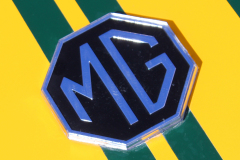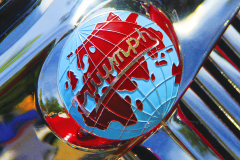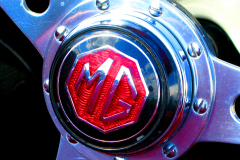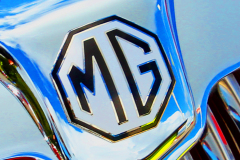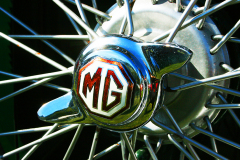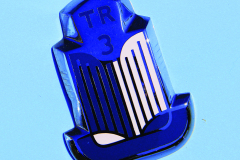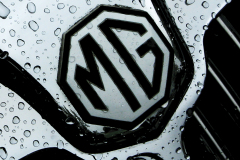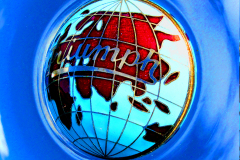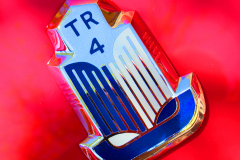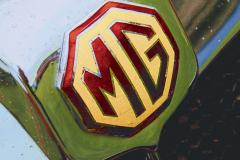MG | Triumph
MG (Morris Garages) was formed in 1924 and is best known for its two-seat open sports cars. MG also produced saloons and coupés.
MG underwent many changes in ownership and is now owned by Shanghai-based SAIC.
The earliest model, the 1924 MG 14/28 consisted of a new sporting body on a Morris Oxford chassis. The first real MG, rather than a modified Morris was the 1928 MG 18/80, which had a purpose-designed chassis and the first appearance of the traditional vertical MG grille.
Beginning in 1929, MG produced a line of smaller cars known as the T-Series Midgets, the first being the MG M-Type Midget based on a 1928 Morris Minor chassis. This series which continued through the 1940s and 1950s included the MG TC, MG TD, and MG TF, all of which were based on the pre-war MG TB.
The MG Magnette was a midsized saloon produced in two build series, the ZA and ZB (1953-1958) and the Mark III and Mark IV (1959-1968), both using a modified Wolseley body and an Austin engine. MG Cars had previously used the MG Magnette name on their K-type and N-type models of the 1930s.
MG departed from its earlier line of Y-Type saloons and pre-war designs and released the MGA in 1955. MGA went through many iterations until production ceased in 1962.
To satisfy demand for a more modern and comfortable sports car, the MGB four-cylinder, soft-top roadster was released in 1962. In 1965 the MGB GT three-door fixed head 2+2 coupé, was released. A variant, the MGB GT V8 was produced between 1973 and 1976. The MGB was produced until 1980, when the Abingdon factory was closed.
Between 1967 and 1969 the short-lived MGC/MGC GT six-cylinder roadster and coupé were produced. In 1967 Prince Charles took delivery of an MGC GT, which he passed down to Prince William 30 years later.
MG also began producing the MG Midget in 1961. The Midget was a re-badged and slightly restyled second-generation Austin-Healey Sprite.
The MG marque lived on after 1980 being used on a number of Austin saloons including the subcompact MG Metro (1982-1990), the mid-sized MG Maestro (1983-91), and MG Montego (1985-91).
Further attempts to revive the MG marque have not been successful. The marque continues to this day, but it is now manufactured in China by SAIC.
The Triumph Motor Company has its origins in 1885 as an importer of bicycles from Europe, branching into automobiles with the purchase of the Dawson Car Company in 1921.
Triumph produced numerous cars before the war, but got into financial difficulties resulting in the sale in 1944 to the Standard Motor Company.
A new range of Triumphs was announced in 1946 – the Triumph Roadster, the 1800 Town and Country saloon (later renamed the Triumph Renown), and the Triumph Mayflower light saloon. All three of these models prominently sported the “globe” badge that had been used on pre-war models.
From the 1950s onwards, Triumph was one of the biggest names in the sports car industry.
In the early 1950s it was decided to use the Triumph name for sporting cars and the Standard name for saloons. In 1953 the Triumph TR2 was initiated, with a Standard badge on its front and the Triumph globe on its hubcaps.
The successful TR series continued through to 1981 – TR3, T3A, TR3B, TR4, TR4A, TR5, TR250, TR6, TR7, and TR8.
The Triumph Spitfire (1962-1980) was a small two seater convertible, based on a shortened chassis of the Triumph Herald saloon. It was introduced to compete with other small sports cars like the Austin-Healey Sprite. Due to serious financial problems the company was unable to put the new car into production until it was taken over by Leyland Motors in 1960. The Triumph GT6 (1966-1973) was a 6-cylinder sports coupé version.
The Triumph 2000 (1963-1977) was a mid-sized, rear wheel drive automobile. Larger-engined models, the Triumph 2.5 PI and Triumph 2500 were also produced from 1968. The Triumph 2000 competed with the Rover P6 2000. Together the cars defined a new market sector in the UK, modern styling, with lower running costs and levels of comfort and luxury previously associated with larger more expensive Rover and Jaguar models.
The last Triumph model was the 1981 Triumph Acclaim, essentially a rebadged Honda Ballade. The Triumph name was gone by 1984.
The rights to the Triumph marque are currently owned by BMW, who purchased the Rover Group in 1994.

